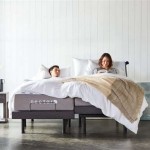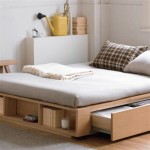Queen Size Bed Foot Warmer: A Comprehensive Guide
Cold feet can significantly disrupt sleep, leading to restlessness and discomfort. A queen size bed foot warmer offers a targeted solution, delivering warmth directly where it's needed most without overheating the entire bed. This guide explores the various types of foot warmers designed for queen beds, their benefits, factors to consider when purchasing, and maintenance tips.
Foot warmers for queen size beds fall into several categories. Electric foot warmers are a popular choice, offering adjustable temperature settings and rapid heating. These typically utilize a low-voltage heating element embedded within a soft, washable cover. Some models feature automatic shut-off timers for added safety and energy conservation. Another option is the non-electric foot warmer, which relies on materials like microwavable rice or gel packs to provide soothing warmth. These offer a portable and often more affordable solution, though the heat they provide typically dissipates more quickly than electric versions.
The benefits of using a queen size bed foot warmer extend beyond simply providing comfort. Improved circulation is a key advantage, particularly for individuals experiencing poor blood flow to the extremities. The gentle heat can help dilate blood vessels, promoting better circulation in the feet and lower legs. This localized warmth can also alleviate muscle soreness and tension, offering relief from conditions like plantar fasciitis or general foot fatigue. For those suffering from conditions like Raynaud's syndrome, which causes constriction of blood vessels in the extremities, a foot warmer can provide much-needed relief from cold and discomfort.
When selecting a queen size bed foot warmer, several factors warrant consideration. Size is paramount. The warmer should comfortably accommodate two feet without being so large that it disrupts bed sharing. The material of the warmer is another crucial element. Look for soft, breathable fabrics like fleece, microplush, or cotton that are comfortable against the skin. Washability is also essential for hygiene and maintaining the longevity of the warmer. If opting for an electric model, safety features like automatic shut-off and overheat protection should be prioritized.
Electric foot warmers offer a range of features that can influence the user experience. Adjustable temperature settings allow for personalized comfort, while timers provide convenience and safety. Some models even offer features like massage or vibration therapy for added relaxation. For non-electric warmers, consider the filling material. Microwavable rice or gel packs offer effective heat retention, while natural fillings like buckwheat or cherry pits provide a more traditional option.
Cost is naturally a factor in any purchasing decision. Electric foot warmers generally represent a higher initial investment than non-electric options. However, their longevity and adjustable features can justify the expense. Non-electric warmers, while generally more affordable, may require periodic replacement of the heating element (e.g., microwavable packs) depending on usage.
Maintaining a queen size bed foot warmer is relatively simple. Most electric models feature removable, washable covers. Adhering to the manufacturer's cleaning instructions is crucial to preserve the integrity of the heating element and the fabric. Non-electric warmers, particularly those with removable packs, should also be cleaned according to the manufacturer's guidelines. Proper care can significantly extend the lifespan of the foot warmer and ensure continued performance.
Beyond individual use, queen size bed foot warmers offer advantages for couples sharing a bed. They provide a targeted heating solution, allowing each individual to customize their comfort level without affecting the other. This can be particularly beneficial for couples with differing temperature preferences, mitigating potential disagreements over thermostat settings. The localized warmth can also enhance intimacy and promote relaxation, contributing to a more restful shared sleep experience.
The placement of the foot warmer within the bed can impact its effectiveness. Ideally, the warmer should be positioned at the foot of the bed, ensuring both users have easy access. Some individuals prefer to place the warmer directly beneath the sheets, while others prefer to rest their feet on top of the warmer. Experimentation will determine the optimal placement for individual comfort and preference.
Choosing the right queen size bed foot warmer involves careful consideration of individual needs and preferences. Factors such as budget, desired features, and material preferences should guide the decision-making process. By understanding the various types available, their benefits, and key features, individuals can make informed choices and enjoy the comfort and improved sleep quality that a foot warmer can provide.

Heat Electric Foot Of The Bed Warmer By Spotwarm

Electric Foot Warmer Pad For Beds Cozywinters

Sunbeam Cozy Toes Heated Footwarmer Pad Com

Foot Warmer Cuddle Fleece Cold Feet In Bed Try A Cosyped

The Foot Of Bed Warmer Hammacher Schlemmer

Bauer Foot Warmer Massager Buy At Qd S
Sunbeam Comfy Toes Heated Foot Warming Mattress Pad Msu1xtf N000 51a00 Buydig Com

Cold Feet In Bed Sleep Number 360 Smart Has You Covered At Ces 2024 Cnet

Sunbeam Electric Foot Warming Pad

Spotwarm Heat Electric Foot Of The Bed Cushion Warmer Vitality Medical







